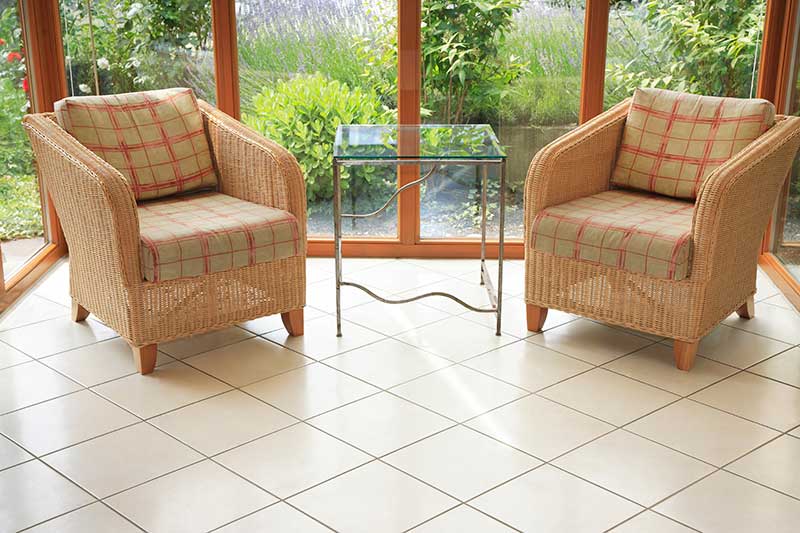As cold weather sets in, homeowners must carefully monitor the temperature. The lower it dips, the higher the chances are for pipes to freeze and burst. Burst pipes are one of the most common forms of property damage during the colder months that can cause $5,000 or more in property damage. It is important to understand how and when can pipes freeze and burst in order to avoid a potential headache.
How Do Pipes Freeze?
Pipes freeze from the outside in. Once temperatures drop below freezing, the process will start; any water on the inner surface of the pipes will freeze first and slowly spread towards the center of the pipe.
The remaining unfrozen liquid is pushed towards either side of the frozen section towards the water source (such as a water main or water heater) or a plumbing fixture (such as a sink or toilet). Water that gets pushed to the source isn’t a major concern; it is the water that gets pushed toward the plumbing fixture where the problem lies.
As water freezes, it expands; it is basic science. In a pipe, the expansion pressurizes the remaining liquid water within the pipe. If there is no way to relieve the pressure the pipe will burst.
When Will Pipes Freeze?
While water starts freezing at 32ºF or lower, the temperature for pipes to freeze depends on various factors that include:
- The temperature: pipes begin to run the risk of freezing once temperatures hit below 32ºF. For insulated pipes, the freezing temperature is 20ºF or below.
- The location of the pipes
- How well insulated the pipes are
- Geographical location
- How long temperatures in your area remain below freezing
How Long for Pipes to Freeze?
How long it takes pipes to freeze depends on the outdoor temperature and conditions, how well-insulated the pipes are, the type of pipe, how thick the pipes are, and the amount of water flowing through them. Metal pipes are more prone to freezing than plastic pipes, just as thinner ones are more susceptible than thick ones. The more water flowing through the pipe, the less likely it is to freeze.
In 20ºF weather, with minimal wind, pipes can freeze in as little as two hours. Under less extreme freezing conditions, an uninsulated pipe will take around 6 to 8 hours to freeze.
At What Temperature Do Pipes Burst?
Pipes burst when frozen water expands and creates excess pressure, so pipes can burst at any temperature below 32ºF. How long it takes them to burst depends on how cold it is and how long the cold temperatures last.
Signs You Have Frozen Pipes
While knowing what temp freezes pipes will help you be alert to potential issues, you also need to know what signs to look for:
- Frosty Pipes: Freezing temperatures bring frost; if you have frozen pipes, they will likely be covered in frost.
- Lack of Water: If you notice little to no water coming from your faucets.
- Smells: If a strange smell comes from your faucets and drains, that is another potential sign. It occurs because frozen pipes will block odors from going down the drain.
9 Ways to Stop Pipes From Freezing
1. Keep an Eye On Outdoor Temperatures
You now know what temperature freezes pipes: 32ºF or below. Knowing this, you want to keep a careful eye on the outdoor temperatures to know when there is a risk to your pipes.
2. Use Proper Insulation
Insulation is vital to protecting your home from the cold. Add extra insulation everywhere, especially in the basement, crawlspace, and attic. You can also buy pipe insulation, which resembles pool noodles, to protect your pipes against the cold.
3. Seal The Doors and Windows
One of the most effective ways to protect your pipes from freezing is to prevent cold from transferring to them. You can seal your windows and doors properly by putting a new caulk line or sealant along the frame. You also need to seal any other cracks that could create cold air transfer.
4. Install a Smart Thermostat
A smart thermostat is an energy-efficient option that lets you control your home’s temperature better. With a smart thermostat, you can closely monitor the temperature and set it so that even when you’re away, it maintains a temperature high enough to help prevent freezing.
5. Keep The Garage Closed
Leaving your garage open means cold air is getting in, which can harm your indoor plumbing. Keeping the garage door closed as much as possible will help to keep the cold away.
6. Run Some Water
While it may sound off, running water is a great way to prevent frozen pipes as moving water won’t be able to freeze. It doesn’t have to be a strong stream; a slight stream or drip will help make a difference.
7. Open Cabinets That Hold Plumbing
Cabinet doors can act as a barrier to prevent heat from reaching pipes in cabinets, like those under sinks. Keep the cabinet doors open to ensure heat reaches them, to help keep them warm.
8. Invest in Energy-Efficient Heating
Energy-efficient heating systems are a worthwhile investment for many reasons. The biggest reason is that they keep your home perfectly heated all year, without high energy bills.
9. Use a Pipe Freeze Protection System
A Pipe Freeze Protection System, like Warmup’s, provides superior protection for your pipes. The system consists of electric heating cables that are wrapped around pipes, drains, and sprinkler lines. The cables ensure that pipes maintain a steady temperature above freezing, and can be adjusted based on the ambient temperature.
Consider Radiant Floor Heating
The right heating system can make a significant difference in your home. One worth considering is electric radiant floor heating. Radiant floor heating systems don’t require big, bulky equipment; they consist of mats with embedded electrical cables installed under your flooring. When turned on, the cables produce radiant heat, which warms the floor and travels upward to heat the rest of the space.
Unlike other systems, radiant heat flooring provides consistent heat at lower temperatures, which means lower energy bills. You can also pair the system with a smart thermostat to further control the temperature by setting different zones, which can be kept at different temperatures.
The combination will help to ensure your interior pipes stay warm without any cold spots.
Prevent Pipe Freezing with Warmup
Warmup is the leading manufacturer of radiant heating products. Their energy-efficient heating solutions can help keep your home warm during the winter and protect your pipes as well. Beyond their Pipe Freeze Protection System, they offer many electric radiant heat flooring options to keep you and your pipes from freezing.
Contact us today to learn more about our radiant heat solutions and determine your best options.





![Thumbnail [200x250]](/wp-content/uploads/Indoor-Systems-Page-Image.png)
![Thumbnail [200x250]](/wp-content/uploads/image-13.png)
![Thumbnail [200x250]](/wp-content/uploads/Projects-Image.png)